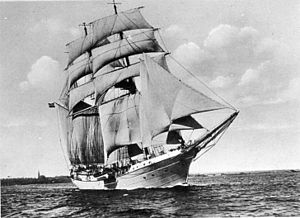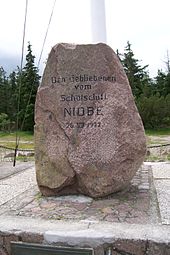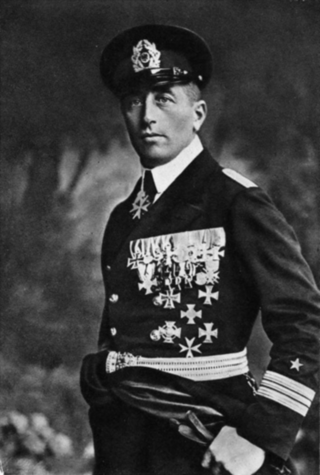
Felix Nikolaus Alexander Georg Graf von Luckner, sometimes called Count Luckner in English, was a German nobleman, naval officer, author, and sailor who earned the epithet Der Seeteufel, and his crew that of Die Piraten des Kaisers, for his exploits in command of the sailing commerce raider SMS Seeadler during the First World War. After the war, Luckner became a war hero in Germany and was renowned around the world for his seamanship and chivalrous conduct during the war, which resulted in a minimal loss of life on both sides.

Gorch Fock I is a German three-mast barque, the first of a series built as school ships for the German Reichsmarine in 1933.

Köln was a light cruiser, the third member of the Königsberg class that was operated between 1929 and March 1945, including service in World War II. She was operated by two German navies, the Reichsmarine and the Kriegsmarine. She had two sister ships, Königsberg and Karlsruhe. Köln was built by the Reichsmarinewerft in Wilhelmshaven; she was laid down in August 1926, launched in May 1928, and commissioned into the Reichsmarine on 15 January 1930. She was armed with a main battery of nine 15 cm SK C/25 (5.9-inch) guns in three triple turrets and had a top speed of 32 knots.
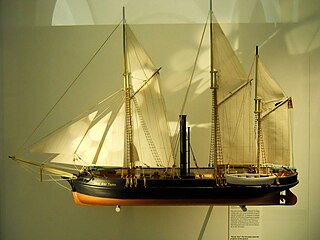
Von der Tann was a steam-powered 120 ton gunboat built in 1849 at Conradi shipyards in Kiel for the small joint navy of the two duchies of Schleswig and Holstein. She was the first propeller-driven gunboat in the world.

SM U-35 was a German U 31-class U-boat which operated in the Mediterranean Sea during World War I. It ended up being the most successful U-boat participating in the war, sinking 220 merchant ships for a total of 505,121 gross register tons (GRT).
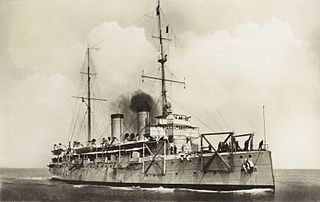
HNLMS Gelderland was a Holland-class protected cruiser of the Royal Netherlands Navy. During its career in the Dutch Navy it was most notable for being the ship Queen Wilhelmina sent to Portuguese East Africa to transport Paul Kruger to Europe during the Second Boer War. The ship was taken over by the Germans during World War II, rebuilt as an anti-aircraft cruiser and renamed Niobe. Commissioned into the German navy on 1 March 1944, she was sunk in Kotka harbour in Finland on 16 July 1944.
Several ships have borne the name Niobe, after the figure of Niobe in Greek mythology
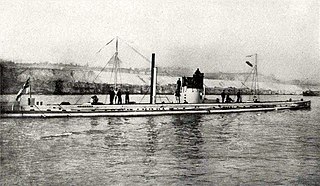
SM U-9 was a German Type U 9 U-boat. She was one of 329 submarines serving in the Imperial German Navy, and engaged in commerce raiding (Handelskrieg) during World War I.

SMS Amazone was a three-masted sail corvette (caravel) of the Prussian Navy. Her keel was laid down in Grabow near Stettin in 1842 and she was launched on 24 June 1843. Amazone sank in a storm on 14 November 1861 off the coast of the Netherlands with 107 dead. She was reported to have collided with an East Indiaman, which rescued the three survivors. Among the dead were "almost all" of the naval cadets being trained to officer the fleet.

German submarine U-46 was a Type VIIB U-boat of Nazi Germany's Kriegsmarine during World War II. She had a highly successful career during the war.
SM U-67 was a Type U 66 submarine or U-boat for the German Imperial Navy during the First World War. She had been laid down in November 1913 as U-8 the second boat of the U-7 class for the Austro-Hungarian Navy but was sold to Germany, along with the others in her class, in November 1914.

HMS Thetis was a 36-gun fifth-rate frigate of the Royal Navy. After nearly a decade of service with the British, she was transferred to Prussia in exchange for two steam gunboats. She served with the Prussian Navy, the North German Federal Navy and the Imperial German Navy as a training ship until being stricken in 1871. Thetis was subsequently converted into a coal hulk and broken up in 1894–95.
SM UB-41 was a German Type UB II submarine or U-boat in the German Imperial Navy during World War I.
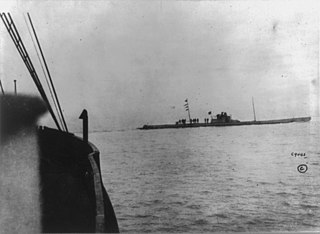
SM U-36 was a Type 31 U-boat in the service of the Imperial German Navy of the German Empire, employed in the commerce war in World War I.
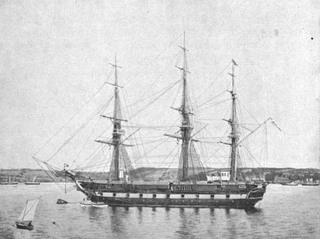
SMS Niobe was a Diamond-class 28-gun sixth-rate sailing frigate built for the Royal Navy in the 1840s. She was never commissioned into the Royal Navy, which was converting to steam power, and was sold to Prussia in 1862. She was named after Niobe, a figure from Greek mythology. She served with the Prussian Navy, the North German Federal Navy and the Imperial German Navy as a training ship until stricken and hulked in 1890. Niobe was eventually broken up in 1919.

German submarine U-508 was a Type IXC U-boat of Nazi Germany's Kriegsmarine during World War II.
Initially built as a combined passenger and transport ship for Turkey, Hugo Zeye was taken over by Nazi Germany's Kriegsmarine at the outbreak of the war and completed as a torpedo training ship. Equipped with eight torpedo tubes, the ship was used to train torpedo personnel for surface combat ships in the Baltic Sea.
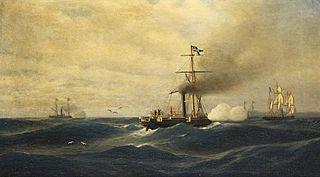
SMS Meteor was a Camäleon-class gunboat of the North German Federal Navy that was launched in 1865. A small vessel, armed with only three light guns, Meteor took part in the Battle of Havana in 1870 during the Franco-Prussian War. There, she battled the French aviso Bouvet; both vessels were lightly damaged, though Bouvet was compelled to disengage after a shot from Meteor disabled her engine. After the war, Meteor returned to Germany, where her career was limited; she served briefly as a survey vessel. From 1873 to 1877, she was deployed to the Mediterranean Sea as a station ship in Constantinople during a period of tensions in the Ottoman Empire. After returning to Germany in 1877, she was decommissioned, converted into a coal hulk and expended as a target ship some time later.

SMS Rover was a brig built in Great Britain in 1853 by the Royal Dockyard at Pembroke in South Wales for the Royal Navy. In 1862, the Prussian Navy purchased the Rover and, retaining the old name, placed her in service in 1863 as a training ship for ship's boys. She served in this capacity in the Navy of the North German Confederation from 1867 and in the Imperial German Navy from 1872. She was decommissioned in 1890 and sold for demolition in 1911.
Bris was a German Vorpostenboot that was built in 1941 as the minesweeper PT 25 for the Soviet Navy. She was seized by Germany before delivery and was used as a fishing trawler before being requisitioned by the Kriegsmarine, serving as V 315 Bris. She was lost in a collision in March 1945.
